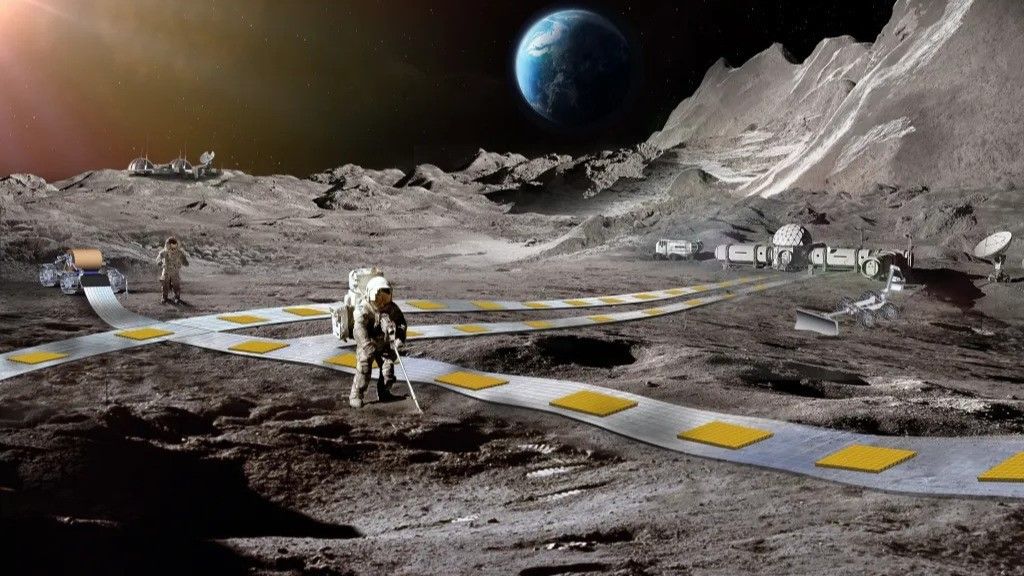
NASA has given the green light for further funding for a project that aims to create a levitating robot train on the moon. Dubbed “Flexible Levitation on a Track” (FLOAT), this project has advanced to phase two of NASA’s Innovative Advanced Concepts program (NIAC). The NIAC program focuses on developing futuristic projects for space exploration.
Ethan Schaler, a robotics engineer at NASA’s Jet Propulsion Laboratory, is the leader of the FLOAT project. He envisions building the first lunar railway system that will provide reliable, autonomous, and efficient payload transport on the moon. This system will be essential for the daily operations of a sustainable lunar base in the 2030s. The initial design for FLOAT involves magnetic robots levitating over a three-layer film track to minimize abrasion from lunar surface dust. Carts mounted on these robots will move at a speed of about 1 mph (1.61 km/h) and could transport up to 100 tons (90 metric tons) of material a day to and from NASA’s future lunar base.
NASA plans to send astronauts back to the moon as early as 2026 through the Artemis mission and eventually establish a permanent lunar base to support future space exploration. Other projects that have moved to the next development phase within the NIAC program include fluid-based telescopes and a plasma-propelled rocket. These innovative concepts aim to push the boundaries of what is possible in space exploration.
In conclusion, NASA’s approval of funding for FLOAT marks an exciting step towards creating sustainable transportation systems on other planets like Mars and beyond. The potential benefits of such systems are vast, including increased efficiency in resource extraction, scientific research, and eventual human colonization of these planets.
As we continue our journey into space, it is crucial that we develop cutting-edge technology that can help us overcome some of the challenges we may encounter along the way. By investing in innovative concepts like FLOAT, we are taking one step closer to unlocking new frontiers in space exploration and ensuring our long-term survival as humans in this vast universe.




/origin-imgresizer.eurosport.com/2024/05/20/image-f0b50a30-67b5-49c3-8cfd-f2a6cae0d877-85-2560-1440.jpeg)

